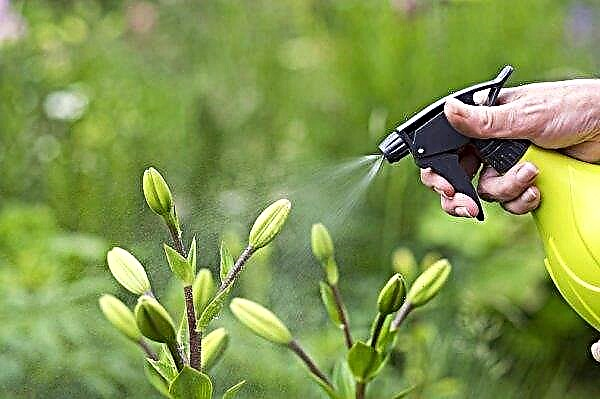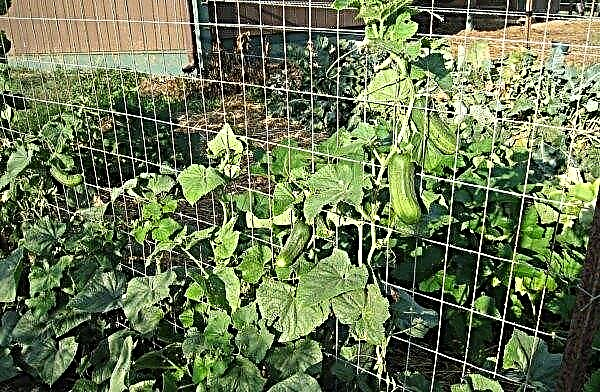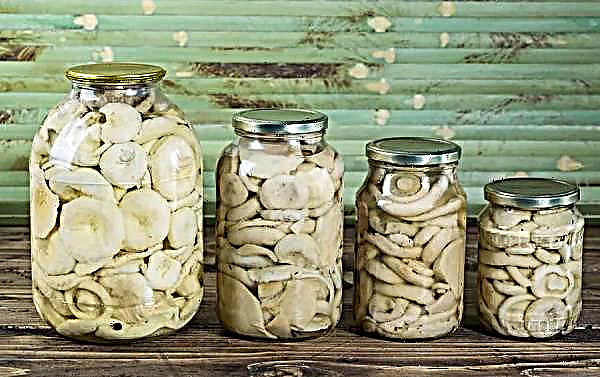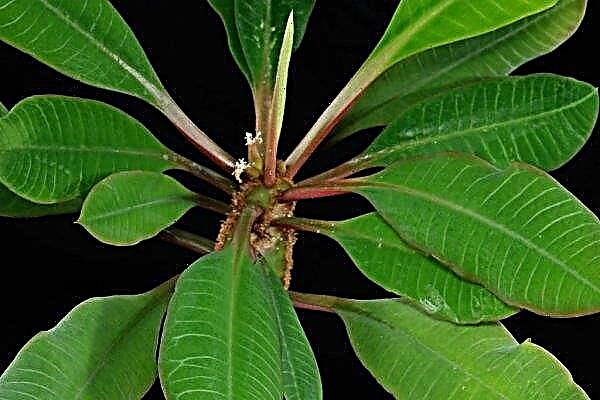A pond in the country is not only an element of decoration, but also a source of moisture on a hot day. When creating a reservoir, its bottom must be isolated from moisture by various materials, including liquid rubber. How to do it yourself, read on in the article.
The need for waterproofing
When arranging a pond, its bottom is usually concreted. Durable material provides a flat bottom, there is no dirt under the feet and the water is relatively clean, the shape of the reservoir is preserved. But this is only half the battle, because on top of a hard coating, you also need a layer that can hold water, i.e. waterproofing. This layer, among other things, will prevent the flowering of water due to bacteria, give the pond a finished and attractive look.
Did you know? During the reign of Peter the Great, overseas masters were invited to build artificial reservoirs in the estates. The pond on the estate was considered a sign of good taste and taste.
Water bodies in the open air are exposed to various destructive factors. - for example, a temperature difference: in summer, the soil overheats, and in winter, on the contrary, it freezes. The roots of plants can also destroy the bottom of the pond from the outside, and when cracks appear on concrete, its insulation is also affected.
Therefore, the protective layer must have high performance:
- strength;
- elasticity;
- long term use.
 One of the most popular materials meeting the described requirements is liquid rubber.
One of the most popular materials meeting the described requirements is liquid rubber.
Self-applying liquid rubber
It is not entirely correct to call the material in question rubber, since it is not made of rubber. This type of waterproofing is based on bitumen emulsion. Latex is added to this composition, which improves elasticity. It is convenient to apply the material using an apparatus with a spray.
Preparatory work
Waterproofing is applied both to the concrete base and to the ground. In the second case, after excavating the foundation pit of the required size, its bottom is covered with strips of geotextile overlapping and fixed with metal brackets. From the concrete base, it is desirable to remove the smallest particles of garbage, small pebbles. For self-application, you will need a device with a spray gun and long hoses.
Important! The lower threshold of the operating temperature of the equipment is + 5 ° C, work is carried out exclusively in dry weather.
The mobile device is equipped with a mixing device and a dispenser. Typically, this equipment is equipped with a gasoline engine, which makes it mobile, independent of the mains. The hose length is approximately 150 m - this allows you to work in large areas. Rubber mastic is sold in convenient plastic containers, like ready-made putty or paint.

Execution technology
The presence of concrete litter greatly facilitates the work, with a dirt bottom a little more difficult, but this is not an obstacle.
Did you know? The largest artificial pool is located in Algarrobo, Chile, with a total area of 8 hectares.
Sequencing:
- The first layer is sprayed onto the fixed geotextile as a primer, 2 mm thick.
- After 2 hours, another layer is applied, after another 2 hours the procedure is repeated.
- Fill the pond with water.
- The rubber film is pressed into the bottom and side walls.
- Fix the edges on the surface.
- Then the water is drained, the bowl is allowed to dry.
- Apply a few more layers of rubber with intermittent drying.
- For strength, apply up to 5-6 layers of insulation.

Advantages and disadvantages of the material
Of all the existing waterproofing, liquid rubber is the most popular. In addition to use on street ponds, it is also used indoors for internal work, and the roof is covered with such protection.
- The advantages of liquid rubber:
- durability - protection will last 20–50 years (depending on the composition and layers);
- elasticity - the layer takes any form, fills all existing defects of the base;
- availability - the price of mastic is low;
- strength - not afraid of winter frosts;
- during the repair, only the desired area is processed;
- the material lies flat, smooth, seamless film;
- decorativeness - mastic is of different colors.
The only drawback so far is the need to purchase spray equipment for working with the material. However, if the pond is small and it is not a pity to equip it with time, instead of an expensive device you can use a conventional airbrush.
Important! There is a type of liquid rubber called spray paint. It can be applied with a spatula or brush, but the shelf life of the material does not exceed 6-7 years.
So, the advantages of liquid rubber are obvious. Having created a real body of water on your site, you will probably want to protect it from destruction. And it’s easy to make protection from damage and moisture penetration with your own hands.












